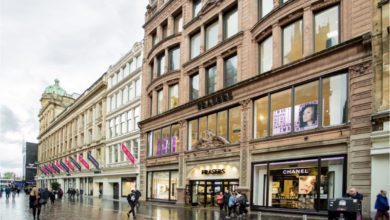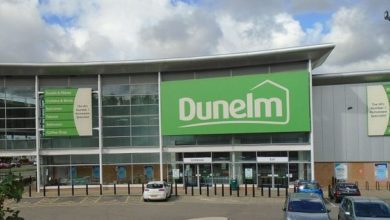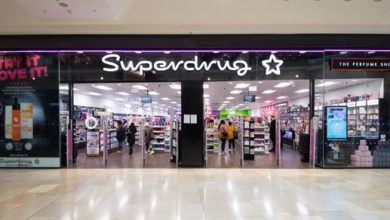The three waves for retailers

Retailers don’t have the luxury of focusing solely on the short-term impact of Covid-19. The familiar retail experience that we’ve come to known will evolve and many of the changes the industry is implementing to counter the effects of the pandemic will become permanent, resulting in a new normal.
We’ve started to refer to these types of pandemic-related industry changes as “The Three Waves,” spanning from the immediate changes that ensured stability in the earliest days to more long-term, strategic changes that will become institutionalised.
Wave 1: Maintaining Business Stability
Wave 1 started when the U.S. economy shut down in early March 2020. This had an obvious impact on all retailers—both essential and non-essential. Stability and continuity became the primary focal points.
Retailers were forced to throw as many resources as possible into maintaining operations. This meant optimising labor hours in ways that minimised costs as much as possible, ensured customer demands could reasonably be met, and maintained employee health and safety.
While declining performance is the expectation, successful retailers found ways to stay afloat in the earliest days of the pandemic – such as offering roadside delivery and selling meal prep kits — and shifted toward the next phase where new ways of working and engaging customers started to become the norm.
Wave 2: A New Retail Normal
When operations stabilised following the efforts in Wave 1, essential retailers were able to focus on institutionalising new ways to engage customers with online and in-store experiences.
Everything from directional flow lines to special store hours for immunocompromised customers, plexiglass dividers to prevent contact, new cleaning regiments, and increased support for roadside pickup have created a new retail normal. In an effort to provide a safe environment for shoppers and store associates, retail leaders have made efforts to get people in and out of stores as quickly as possible while also limiting the number of people allowed in the store at any given time.
Even when the pandemic quiets down, retailers will still take precautions to maximise the health and safety of both customers and employees in stores, in corporate offices and on warehouse floors. The efforts being made to address new trends in consumer behaviour will become mainstays of the adjusted customer experience. Things like buy online, pick up in store (BOPIS) with roadside pickup options, contactless purchases, and increased integration between digital and physical experiences will become standard means of engaging with customers.
The ability to scale up digital capabilities to support these initiatives and meet evolving customer demands will be critical to business success both now and in the aftermath of the pandemic.
Wave 3: Long-Term Transformation
At some level, the long-term transformation in Wave 3 should occur simultaneously with Wave 2. While there’s no one-size-fits-all way to adapt, there are certain technologies and strategies that will become essential to building viable retail businesses moving forward.
1. Increasing Product Sourcing Diversity
When demand for certain non-discretionary products spiked as news around Covid-19 broke, it became clear that supply chains weren’t agile enough to adjust quickly to keep up with customer demand. Part of the problem is that many retailers haven’t diversified their product sources to a point where shortages on the backend don’t impact customers.
Retailers need to find ways to balance profitability with product sourcing diversification by identifying the regions that will help them limit travel costs, inspection costs, and lead times. Product sourcing diversification won’t happen overnight. However, making data-driven decisions about where to source products will unlock long-term value for retailers—even in the wake of devastating external forces.
Rebuilding retail after the pandemic won’t just be about working back to the pre-2020 status quo. Rather, the future of the industry depends largely on retailers and their ability to prioritise operational transformation to take advantage of new solutions and technologies to balance employee health and safety, improve the customer experience, and maintain profitability.
2. Leveraging Intelligent Automation
Retailers will implement more automation solutions to help maximise shopper and employee safety, keep up with ever-changing consumer demands, and manage both fulfilment and in-store operations. Food, drug, and mass-merchandise (FD&M) retailers in particular are expected to capitalise on automation technology investments for both the front and back of stores to help meet post-crisis needs.
One thing that the pandemic has made clear is that the majority of supply chains and operational procedures weren’t designed to maximise flexibility. Consumer behaviour changed so rapidly that many retailers weren’t able to adapt without service suffering at least to some extent. Going beyond prescriptive automation to embrace intelligent automation will make it easier to streamline end-to-end processes.
The combination of artificial intelligence (AI) and robotics can bring data-driven approaches to supplier quality, merchandising, distribution, logistics, and fulfilment, giving retail leaders the insights necessary to maximise value capture. Instead of reacting to external forces and rapid changes in consumer behaviour, intelligent automation creates opportunities to operate more proactively.
3. Optimising Last Mile Delivery
Retailers have been under pressure to improve e-commerce and logistics capabilities for years now. However, the current pandemic has magnified even small issues in e-commerce operations as retailers have seen a massive spike in home delivery requests. As stores reopen, enabling and optimising last-mile delivery will be critical to satisfying customer expectations, reducing marginal costs and improving overall efficiencies.
There are a few tactics that can help retailers optimise last-mile delivery, including:
- Providing flexible delivery options based on delivery method and location as well as consumer need
- Creating a collaborative network with suppliers to maximise visibility on the backend
- Leveraging brick-and-mortar stores as fulfilment centre to minimise shipping costs and delivery times by locating products as close to the end customer as possible
- Using technology to maximise the value of delivery routes by serving more customers in the same amount of time
Last-mile delivery has always been a significant challenge for retailers and the pandemic has only increased customer expectations. By implementing automated solutions, retailers can alleviate this pressure while positioning themselves for future success.









